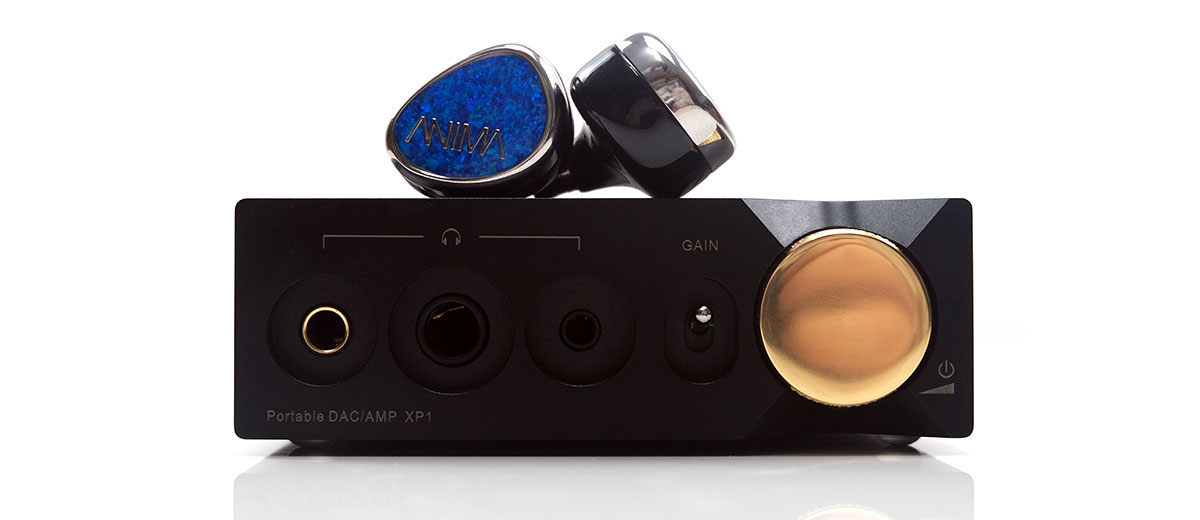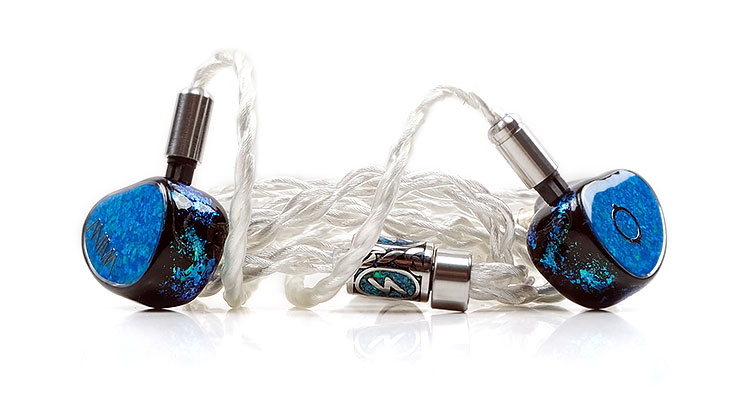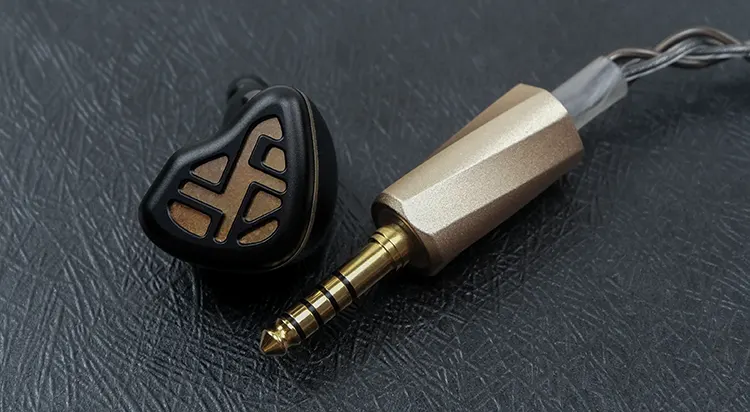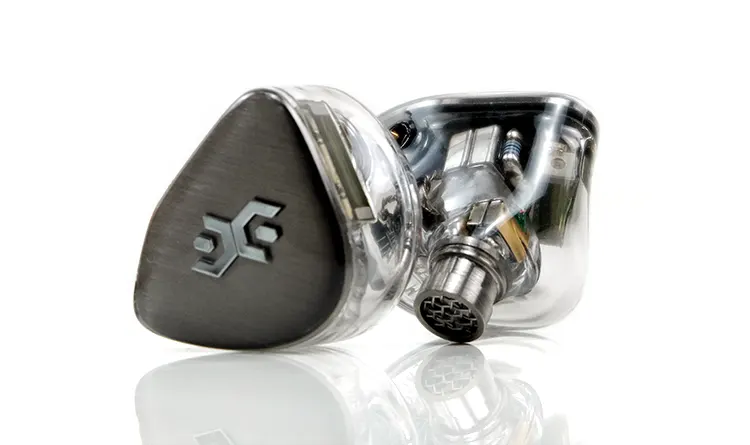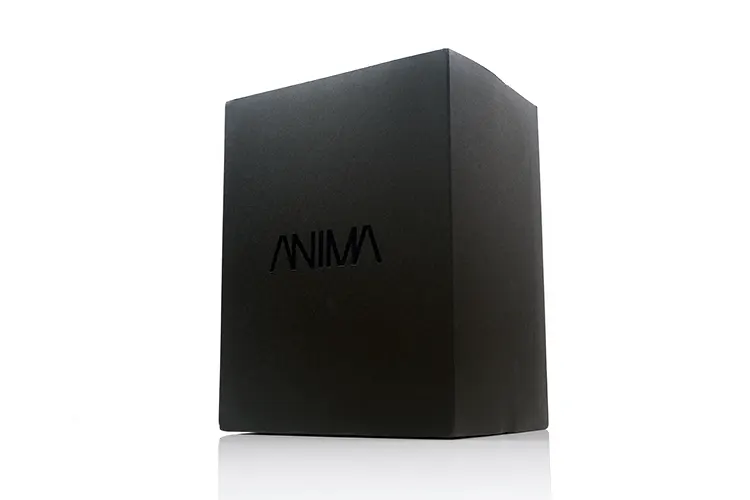Select Comparisons
The following comparisons to the Lime Ears ANIMA V2 were completed using a mix of the iBasso DX320 MAX Ti, the ONIX Mystic XP1, and the iBasso DC-Elite paired with a Samsung S23 Ultra. The stock tips were switched to SpinFit CP145 alternatives.
Lime Ears ANIMA V1
The Lime Ears ANIMA (V1) was launched in early 2022 and has been discontinued with the V2 replacing it as the flagship IEM in the company’s lineup.
Technical
I have done a lot of this comparison throughout the review already so I will keep it brief.
The key difference internally is the new driver configuration which does away with the 4 EST drivers inside the original and replaces them with a dual Sonion BA super tweet array reducing the driver count from 13 to 11.
The rest of the driver setup is quite similar with a BADD mix of a single 7mm dynamic driver for the sub-bass and a dual BA array up to the mid-bass. Both have dual BA for the mid to upper bass, two vented BAs for the mids, and 2 BAs for the highs.
The impedance and SPL differ at 38Ω and 104 dB SPL @ 1kHz for the ANIMA V2 compared to 16Ω and 116 dB SPL. That makes the new version less sensitive and slightly harder to drive compared to the old version.
Design
The ANIMA V2 is smaller and more compact than the original version, though the design language is unchanged. The Bello Opal faceplate is the centerpiece of both IEMs.
Gone is the old multi-colored flake design on the old reason shell to be replaced by a somewhat muted and plainer black shell on the ANIMA v2, but I think the new stainless steel rim is more professional than the slimline finish on the larger V1.
There is a slight difference in the comfort and isolation levels. I enjoy the original’s higher pressure level for assured pressure and good passive isolation.
The ANIMA V2’s slimmer profile makes it a bit more tip-sensitive to achieve the same pressure levels but the smaller profile makes it comfier and does not stick out of your ear as much.
The ANIMA V2 EA cable is technically a more modern geometry with a higher 21AWG gauge rating so lower resistance compared to the Viking Weave stock cable from the V1.
However, I liked the intricate and finely crafted barrel design on the original cable, which was a little bit plainer in comparison to the EA stock cable versions.
Performance
On paper both IEMs are W-shaped, but the extent of the emphasis on the peaks and dips has changed in such a way as to give the V2 more of a dynamic high contrast tonal quality. The V1 sounds comparatively ‘dreamier’ with a softer, warmer timbre and more of a midrange emphasis.
The ANIMA V2 has a lifted sub-bass presence by a few dB over the V1. It sounds much deeper and fuller now and addresses my initial concern with the V1’s bass response not adding enough of a fundamental on lighter mixed tracks.
You get a very strong fundamental with the V2 but the flipside is less presence from the mid-bass through to the lower-mids, meaning the V1 delivers more warmth and instrumental presence.
The ANIMA V2 has a stronger bass-to-mids separation and a leaner set of lower mids with a more neutral timbre for instruments and vocals. Vocals sound ‘smaller’ and leaner on the V2, slightly further away, and not as even-harmonic biased as the original.
The treble on the V2 is more physical, more tangible, and less ethereal compared to the V1. The extension on both IEMs is excellent but I detect a bit more amplitude from the ANIMA V2 around 8-10k and both show a drop from 4-6k.
If you stick with the stock tips the treble can dominate with neutral sources such as the DX320 MAX Ti sounding slightly detached courtesy of both IEMs from 4-6k. Switching to SpinFit CP145 tips will soften the attack and produce a more natural or agreeable tone from both IEMs.
Rossi&Wing First Light
I reviewed the Rossi&Wing First Light special edition last week, and it will be available worldwide by December 2024. You can go higher with the Founders Limited Edition, but the tuning and tech in each model are the same.
Technical
The First Light is a complex beast, perhaps even more so than the ANIMA V2.
The driver count is technically 13 +1 (14?) with a unique 10mm R-ESTDD (Rear Electrostatic-dynamic driver) for the lows (and highs) and 6 dual BA driver arrays for the mids and highs with a CMB or Custom Matrix Blend 3+1 proprietary crossover.
The EST driver range is split between adding an element of definition and clarity to the mid-low regions and assisting with the treble extension and refinement. For everything in between, the First Light uses the 6 dual BA driver arrays.
In a roundabout way, ANIMA V2 has a similar approach to the lows with BADD. That mix of the 7mm dynamic driver combined with a dual BA array covering the lows is designed to add an element of clarity and speed to the bass response.
The First Light is also a bit easier to drive than the ANIMA V2 at 13.5Ω impedance and 113 dB/mW @ 1 kHz SPL compared to 38Ω and 104 dB SPL @ 1kHz.
Testing with the DX320 MAX Ti, I found the ANIMA V2 to sit more comfortably on a higher gain stage compared to the First Light with a balanced connection.
Design
These two IEMs have similar width though the First Light is noticeably deeper on the main shell courtesy of a large internal resonance chamber. So, from the top down they seem to have the same form factor but from the side, the First Light looks much bigger.
That means the First Light sticks out of your ear more compared to the flusher fit of the ANIMA V2. There is also some additional fiddling with the First Light to get the passive isolation seal right whereas the ANIMA V2 kind of seals right away with the correctly sized tips.
I had presumed First Light was heavier with its mix of CNC-machined aluminum alloy, stainless steel, and brass materials. However, I think it is slightly lighter subjectively in the hand alongside the ANIMA V2. Certainly, the ANIMA V2 feels denser to the touch.
Aesthetically two very different design languages. The First Light has a darker almost noire-like appearance with that distinctive 3-dimensional grill pattern for the faceplate. The ANIMZ V2 has a jewelry-type vibe with the Bello Opal plate sparkle. Both use plated rims with dark shell finishes.
Both have excellent cables. I prefer the Special Edition First Light’s Morningstar R2216 cable’s more distinctive styling and lighter handling. However, the EA cable supplied with the ANIMA V2 is a larger 21AWG gauge so resistance will be lower giving it a technical or performance edge.
Performance
Save for the deep sub-bass reach these two IEMs are the polar opposite of each other. If you like one, you might hate the other or buy both to have something very different depending on your mood.
The First Light is thick, weighty, and rounded in tone with a dark treble performance. Its vocals are more upfront, imbued with more body, and sound rich and smooth in their delivery.
Its midrange instruments are equally rich and planted sounding, with a strong fundamental and warmth traveling up from elevated lows.
Its weakness is tonal contrast in the timbre. It lacks a strong treble presence with notes sounding quite rounded, hampering instrumental and vocal separation a little though its big macro soundstage can help with a sense of space.
The ANIMA V2 is much more treble-influenced, especially with the stock silicone tips. Its upper treble is more energetic and you will pick up on better headroom and more contrast in the general tone throughout.
The downside is the lack of body in the midrange and highs. The dynamic driver delivers some killer sub-bass, perhaps even more so than First Light.
However, the drop from 100-500Hz means the weight and warmth do not carry as well into the mids creating that leaner contrast for vocals and instruments.
I find the space, depth, and height better on the ANIMA V2 but the texture and weight of notes beyond 100Hz are superior on the First Light. It’s a more forgiving or ’emotional’ sound signature compared to the ANIMA V2’s neutral tone but not as airy and speedy sounding in the mids and highs.
Elysian Acoustic Labs Annihilator 2023
The Elysian Acoustic Labs Annihilator 2023 has been one of the hottest flagship models in Asia (and worldwide?) for the last year. Created in Malaysia and partnered by Effect Audio it was reviewed and scored highly by us in Q1 of 2024.
Technical
The Elysian Acoustic Labs Annihilator 2023 is a Tribrid with EST as opposed to the ANIMA V2’s hybrid architecture which did away with EST.
Inside is a 7-driver as opposed to 11 with a single Foster dynamic driver for the lows, 4 BA for the mids, and a set of dual Sonion electrostatic tweeters for the highs using a 4-way crossover. There is no BA overlap to shape the lows similarly to the ANIMA V2 mix of dynamic and BA for its bass response.
The Annihilator 2023 has a fairly moderate load for an IEM at 22Ω but the real eye-catcher is the sensitivity level at just 94db @100mV @1khz which is thirsty enough. Those Sonion drivers can really ‘dim the lights’ when it comes to sensitivity levels and this IEM is no exception.
At 38Ω and 104 dB SPL @ 1kHz, the ANIMA V2 is no ‘featherweight’ either. However, when placed side by side you will find the Annihilator 2023 slightly more sensitive. At least that was my subjective analysis when comparing them using the DX320 MAX Ti on its highest gain stage.
Design
The Annihilator 2023 is a chunky monkey when placed beside the updated slimline form factor of the ANIMA V2. It’s a similar feeling to the First Light with the main difference from the additional girth around the deeper main shell of the Annihilator 2023.
That means the Annihilator 2023 will stick out a bit more when in your ears, however, the slightly more aggressive curving in its resin shells and a thicker nozzle means silicone tips will have more pressure in the ear canal producing a marginally stronger seal.
The ANIMA V2 seals quite well but the narrower nozzle might force you to upsize your tips or use stiffer versions to create the same level of isolation.
Aesthetically, the ANIMA V2 has more eye candy, something more to look at. Not that the Annihilator 2023 looks poorly designed but rather the sample I have here is a muted grey and transparent shell meaning the aesthetic pull is more what you can see inside the IEM not the external finish.
Both of these IEMs have beautiful but beastly cables. The Annihilator comes with a 3rd party Liquid Links Martini which retails for around $350 separately.
The chunk comes from its 8-wire geometry and the huge, almost oversized angular 4.4mm plug and barrel. The barrels are next-level exquisite though and real lookers but can be a problem with connecting to ports in tight spaces.
The EA cable with the ANIMA V2 should have a technically equal if not better performance with its 2-wire 21AWG custom Litz geometry.
However, the jack barrel and connectors are somewhat muted in comparison. The bello opal finish is a nice touch for the splitter but the barrel form factor is technically a bit dated.
Performance
Both IEMs aim for a more boisterous sound signature with an enhanced sub-bass presence, a decent vocal lift, and a bit of jovial play in the highs.
These two IEMs offer excellent sub-bass weight, however, the ANIMA V2’s bass shelf is shorter with an enhanced bass-to-mids separation compared to the Elysian tuning.
The Annihilator 2023’s stronger 80-400Hz elevation creates a lot more bass bloom with a stronger punch compared to the ANIMA V2 as well as a warmer timbre through the mids.
The ANIMA V2 is more dipped in this region so less warmth and richness is traveling into the mids creating a leaner more neutral tone to both instrument and vocal performances.
There is also a more forward presentation from the ANIMA V2 from 800Hz up to 2k. Despite the lack of note body, it’s clearer and more open-sounding for vocal performances.
The Annihilator 2023 vocals, while sounding more natural and slightly richer, can still get dominated by the mid-bass bloom when the lows go into overdrive.
The treble on the Annihilator 2023 is politer sounding, not quite as forceful with that pristine or ethereal EST timbre on display. The ANIMA V2 is more animated with a stronger 8-10k or upper treble lift that creates a lot of heavier contrast in its midrange timbre.
Overall, I find the Annihilator 2023 the smoother and more natural-sounding tuning that gels better with my listening preferences. However, I suspect some will prefer the Anima V2 if they are after a little less bass bloom and more clarity through the mids and highs.
My Verdict
The Lime Ears ANIMA V2 should be considered a substantive improvement on the V1, especially with the excellent dynamic driver sub-bass response.
It is a resolving but unique-sounding high-end IEM with some audible pros and cons. This is also an IEM that requires careful consideration regarding ear tip selection and source matching. Go with SpinFit and you should get the most natural tonal match.
I appreciate the size reduction and pro-level finish though I guess I have an outlier set of ears as I never felt the original V1 size to be much of a problem. If a flush fit is important to you then the lower-profile ANIMA V2 will be an ideal choice.
This is still a premium-looking high-end universal IEM in 2024. The Bello Opal plate gives the ANIMA V2 a standout visual in keeping with its memorable ‘anti-Harman’ tuning. This is a try before you buy based on my preferences but it still delivers a more complete performance than the original.
Lime Ears ANIMA V2 Technical Specifications
- Driver configuration: 7mm Titanium dynamic driver, 10 Balanced Armature drivers
- 1 dynamic driver for infra-sub frequencies
- 2 BA for the subwoofer frequencies
- 2 BA for the lows
- 2 Vented BA for the mids
- 2 BA for the highs
- 2 Sonion BA for the ultra-highs
- Crossover: 6-way
- 5Hz – 40kHz (theoretical)
- Sensitivity 104dB
- Impedance 38Ω

